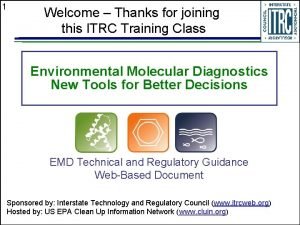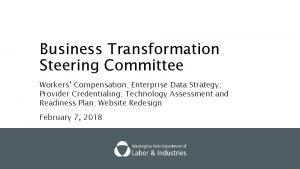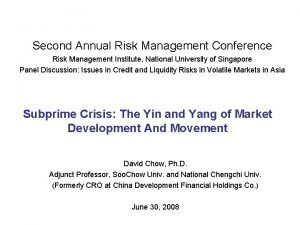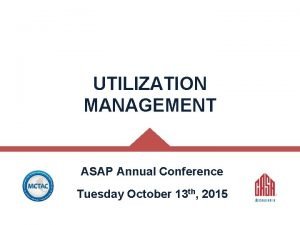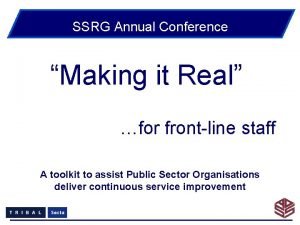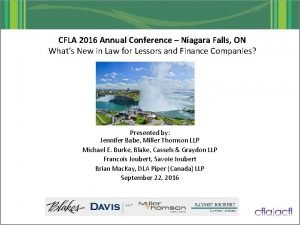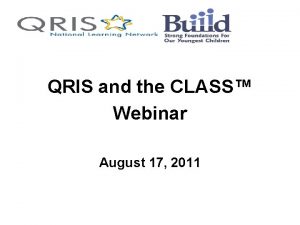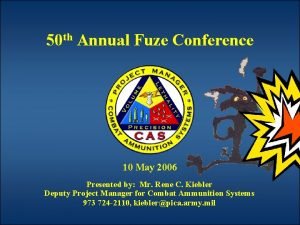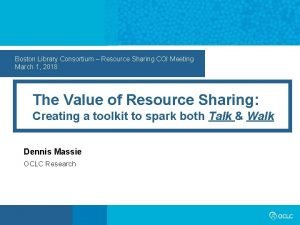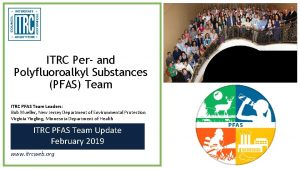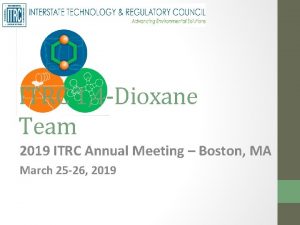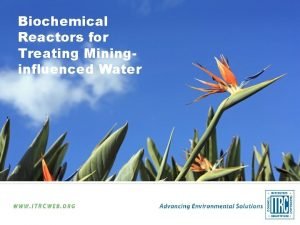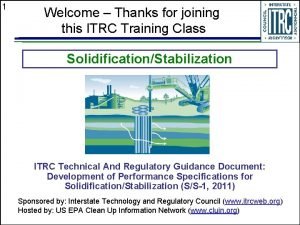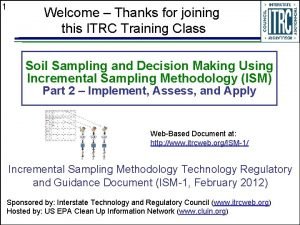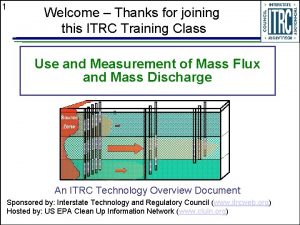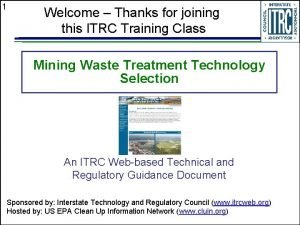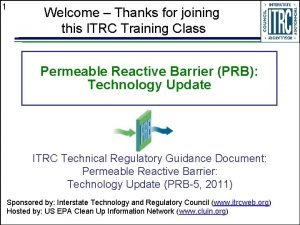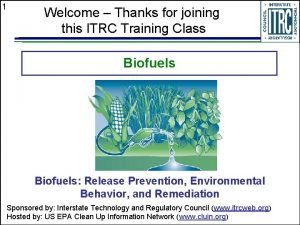ITRC SF Conference Jan 2018 ITRC 2018 Conference





















- Slides: 21

ITRC SF Conference Jan 2018 ITRC 2018 Conference Preparing People for Climate Change in California Building Resilience in the Face of Climate Change-Related Traumatic Experiences Sergio Aguilar-Gaxiola, MD, Ph. D Professor o Clinical Internal Medicine Director, Center for Reducing Health Disparities UC Davis School of Medicine Oakland, CA January 25, 2018






USGCRP, The Impacts of Climate Change on Human Health in the United States: A Scientific Assessment, 2016

ITRC SF Conference Jan 2018 Effects of Disasters 1. Initial shock and mourning, fear, anxiety, and depression. 2. Initial sense of being overwhelmed. 3. A sense that things are not real, are occurring to someone else. Like a bad dream from which one needs to be awoken. 4. Positive and negative expectations of survival. Depending on the events, people may feel great relief over their own and their family’s survival, but they also frequently experience a sense of guilt over others who have been hurt, perished, or lost homes or property. The Society for Community Research and Action, 2010

ITRC SF Conference Jan 2018 Effects of Disasters (2) 5. Intense anger at fate, the government, the attackers (if that is the case), or even at God for allowing such things to happen. 6. Sleep difficulty and troubles eating, particularly healthy foods, often with a risk of trying to selfmedicate with alcohol or drugs. 7. Being consistently reminded in this stage of the original horror or fear. People often report feeling like they can still see the events unfold before their eyes. The Society for Community Research and Action, 2010

ITRC SF Conference Jan 2018 Most Common Mental Health Problems 74% of 130 distinct samples (>50, 000 individuals who experienced different disasters) 1. Post Traumatic Stress Disorder (65%) 2. Major Depression (37%) 3. Non-Specified Stress 4. Somatic Concerns 5. Generalized Anxiety Disorder (19%) Norris, 2005; Wiese, 2005

ITRC SF Conference Jan 2018 Multiple Risk Factors � � Extremity of environmental destruction Increased loss = higher distress/trauma – – Loss of family/friends Injury of life threat Relocation/displacement Loss of home/possessions � Exposure of traumas in the past � Preexistent health/mental illness � Chronic poverty, homelessness, unemployment, discrimination, racism—social determinants of health � Recent/subsequent life stressors – e. g. , single parenting, loss of job APA & NCPTSD; Wiese, 2005

ITRC SF Conference Jan 2018 Tips on Self-Care � Find support (family, friends, community group) � Maintain � Take � Be routines a break from news gentle with self—Acknowledge feelings � Find opportunities to help others � Focus on the present � Establish � Engage � Avoid healthy habits—sleep, eat, exercise in activities that make you feel better major life decisions Wiese, 2005

ITRC SF Conference Jan 2018 Resilience defined… � “…a process linking a set of adaptive capacities to a positive trajectory of functioning and adaptation after a disturbance. ” � “A majority of individuals psychologically affected by a traumatic event (such as a climate related disaster) will recover time. ” Norris, 2005; Wiese, 2005; Crimmins et al. , 2016

How prevalent is resilience after disasters?


ITRC SF Conference Jan 2018 Summary and Conclusions � Resilience is not a trait that an individual, organization, or community has for all time. � Rather, it is one particularly desirable trajectory of post-event functioning that is influenced both by the severity of the stressor and by resources that can be strengthened via pre- and post-event interventions � There is progress in the areas of individual and community resilience (AND vice versa) Wiese, 2005

The Society for Community Research and Action, 2010

ITRC SF Conference Jan 2018 Principles that Guide Community Work 1. Solid research information promotes good decisions in the real world (and vice versa). 2. Multiple contexts demand flexibility 3. Social justice is always at risk in any community under duress 4. Knowledge is a public private good 5. Actions should emphasize strengths and solutions, not simply challenges and deficits The Society for Community Research and Action, 2010

ITRC SF Conference Jan 2018 Five Essential Elements of Intervention at the Individual Level 1. A sense of safety 2. Calming 3. A sense of self and collective efficacy 4. Connectedness 5. Hope Hobfall et al. , 2007; The Society for Community Research and Action, 2010

ITRC SF Conference Jan 2018 Resources that Promote Community Resilience to Disasters 1. Resilience is not something intrinsic to a community, but is something that can be developed and encouraged 2. Resilience is an ongoing process that is achieved over time 3. Resilience can be cultivated 4. Skills associated with resilience can be learned and practiced The Society for Community Research and Action, 2010

ITRC SF Conference Jan 2018 Increasing Community Resilience in Disaster Recovery 1. Communities must work to better develop economic resources, reduce risk and resource inequities, and attend to their areas of greatest social vulnerability. 2. Local people must be engaged meaningfully in every step of the process. 3. Pre-existing organizational networks and relationships are the key to rapidly mobilizing emergency and ongoing support services for disaster survivors. 4. Interventions are needed that boost and protect naturallyoccurring social supports in the aftermath of disasters. 5. Communities must plan for the unexpected, focusing on building flexible and trusted information and communication resources that function in the face of unknowns. The Society for Community Research and Action, 2010
 Itrc training
Itrc training January 2018 chemistry regents answers
January 2018 chemistry regents answers Jan 31 2018
Jan 31 2018 Dada la siguiente secuencia rusia 2018 rusia 2018
Dada la siguiente secuencia rusia 2018 rusia 2018 Financial risk management conference 2018
Financial risk management conference 2018 Cmaa conference 2018
Cmaa conference 2018 Eacs conference 2018
Eacs conference 2018 Pmi houston chapter
Pmi houston chapter Tlffra conference 2018
Tlffra conference 2018 Pfa conference 2018
Pfa conference 2018 National business group on health conference 2018
National business group on health conference 2018 Asha convention hotels 2018
Asha convention hotels 2018 Pat lincourt oasas
Pat lincourt oasas Adss conference 2018
Adss conference 2018 Cfla conference 2018
Cfla conference 2018 Februr
Februr Cigna conference 2018
Cigna conference 2018 Talent analyst emsi
Talent analyst emsi Interact conference 2018 teachstone
Interact conference 2018 teachstone Elavon msp conference 2018
Elavon msp conference 2018 Annual fuze conference
Annual fuze conference Aatb conference 2018
Aatb conference 2018
